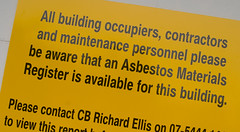Mesothelioma Prognosis & Life Expectancy

.
.
On this page:
Mesothelioma is a deadly form of cancer caused by inhalation of asbestos fibers, which imbed themselves in the mesothelia, or lining, of the lungs, abdomen, heart and/or testicles. Mesothelioma symptoms typically arise decades after initial exposure to asbestos, and even once they appear they are often mistaken for symptoms of another condition. Consequently, mesothelioma is usually diagnosed in the latter stages of its progression, and for most patients this translates to a very poor prognosis. The majority of case studies indicate the life expectancy for a person diagnosed with mesothelioma is less than a year.

In rare cases, mesothelioma patients have survived for up to a decade or more, and the search for new mesothelioma treatments is ongoing. This is small consolation to patients and their families who are suffering from the effects of this horrible disease. If you believe you or a loved one was exposed to asbestos due to the negligence of a former employer or other party, you are advised to speak with a mesothelioma attorney. By filing a personal injury or wrongful death lawsuit you may be able to recover compensation for pain and suffering, medical bills and other factors.
.
Statistics Relating to Mesothelioma Prognosis
On the whole, statistics relating to mesothelioma are very inconsistent. For example, some studies show only 5 percent of mesothelioma patients surviving more than five years, while others show 10 percent surviving. The American Cancer Society estimates the average survival time of a mesothelioma patient after diagnosis is four to 18 months.
Much of the discrepancy in statistics comes down to the fact that mesothelioma — particularly peritoneal mesothelioma (mesothelioma of the abdomen and or testicle lining) and pericardial mesothelioma (mesothelioma of the heart lining) — is so rare. It is caused solely by long-term asbestos exposure, and those who worked in industries such as shipping, mining and construction make up the vast majority of mesothelioma cases.
Another reason for the variance in mesothelioma statistics is that many of the studies on which they are based looked at people in the past, and treatment methods have since changed and improved. For instance, researchers and oncologists now know that the prognosis for patients with mesothelioma tumors comprised of sarcomatoid or mixed mesothelioma cell types is grimmer than for patients with tumors comprised of other cell types.
The inconsistency in mesothelioma statistics can be frustrating for patients and their families. However, when certain factors exist the prognosis on a patient may be much better than the average. Some mesothelioma experts believe that prognosis of the disease depends much on individual differences and less on the success of conventional mesothelioma treatments such as chemotherapy and radiation therapy. The factors that determine a mesothelioma patient’s prognosis and life expectancy are covered below.
.
Factors Associated with Mesothelioma Life Expectancy
A mesothelioma patient’s prognosis and life expectancy is very much dependent on various factors such as the following:
Overall health. Patients who are physically fit and follow certain dietary guidelines have a better change of surviving longer.
Age. For many reasons, older patients are less-likely than young patients to survive a long time.
Symptoms. Mesothelioma symptoms are a strong indicator of a patient’s prognosis. For example, patients who have not experienced chest pain may have a better prognosis. On the flip side, those who have chest pain or shows signs of cancer cachexia (“wasting syndrome”), which is characterized by the inability to maintain weight, typically have a poor prognosis.
Smoking. While smoking does not cause mesothelioma, it can cause lung cancer, and patients who smoke are less likely to be physically fit and more likely to have compromised immune systems.
Type of mesothelioma. Prognosis also depends on whether the patient has pleural mesothelioma, pericardial mesothelioma or peritoneal mesothelioma. By taking biopsies and imaging tests, your doctor will be able to give you a better idea of how long you or your loved one can expect to survive.
Size of the tumor. Patients with smaller tumors have a better chance of exceeding the median survival time.
Location of the tumor. The life expectancy of a mesothelioma patient can be further determined by the location of the tumor and the degree to which is has spread. For example, patients with pleural mesothelioma that has spread from the lungs’ lining to the organ itself typically have a poor prognosis.
Resectability of the tumor. Resectable tumors are those that can be seen and removed via surgery. The resectability of a mesothelioma tumor depends on its size, stage, cell subtype and location. Though many (but not all) stage 1, stage 2 and stage 3 tumors are resectable, most experts agree that only epithelioid tumors should be resected. Tumor removal is often accompanied by chemotherapy or radiation treatment to kill cells that cannot be seen, and to prevent “seeding,” whereby cancerous cells left behind in surgery imbed in adjacent tissues and lead to cancer in these areas.
Factors relating to blood. Patients with normal levels of red cells (hemoglobin), white cells, platelets and LDH typically fare better than patients with lower amounts of these blood components.
Mesothelioma cell type. Tumors comprised of sarcomatoid or biphasic (mixed) cell types usually lead to a poorer prognosis than tumors comprised of epithelioid cells.
.
Pleural Mesothelioma Staging and Models
A patient’s prognosis, or outlook, is based on the stage of his or her mesothelioma. Pleural mesothelioma — by far the most common form of the disease — is the only type of mesothelioma for which official “staging” systems exist.
In the United States, the most common system used for staging is the American Joint Committee on Cancer (AJCC) TNM staging system, which takes into account the original tumor (T), how much it has spread to nearby lymph nodes (N) and whether it has metastasized (M) to other areas such as the lungs or peritoneum.
Cases of pleural mesothelioma are classified into four stages, with stage 4 being the most advanced stage. To determine the stage of a patient’s mesothelioma, doctors will:
- perform a physical exam
- run imaging tests (FDG-PET/CT scans)
- take biopsies
Nodal status. Mesothelioma cancer cells that spread to the lymph nodes are especially lethal. Nodal status is one of the most important indicators of a patient’s prognosis.
.
Researchers around the world are engaged in a concerted and noble race to develop effective treatments for mesothelioma, but currently little can be done to improve a patient’s prognosis once mesothelioma has been diagnosed. Some patients are able to stave off some of the more unpleasant effects of the disease through dietary changes, but ultimately mesothelioma overwhelms the body’s defenses and leads to death.
In order to develop new treatments to combat the disease at its earlier stages, and to improve treatments currently used, researchers are attempting to identify biological markers in patients who are likely to develop the disease. Meanwhile, existing patients’ only recourse to pay for their medical bills is to take legal action against those responsible for their exposure to asbestos. Generally, mesothelioma lawsuits have a far better chance of ending in a settlement or court award than other kinds of civil lawsuits. If you or a loved one has suffered from the effects of malignant mesothelioma or asbestosis, contact a personal injury attorney as soon as possible to discuss your options.





 The Mesothelioma Research Foundation of America (Mesorfa) Family Support Group is an advocate for all victims in the United States of mesothelioma, an uncommon form of cancer. This support group is known for offering free services for US Navy Veterans who have been diagnosed with mesothelioma. The Mesorfa Family Support Group is also extending its mesothelioma victims initiative to encompass chemical plant, shipyard, oil refinery, and power plant workers who are now diagnosed with or living with mesothelioma. According to the US Centers for Disease Control about 2500 US citizens will be diagnosed with mesothelioma this year, and about thirty percent of these people are going to be Veterans of the US Navy. Also, another thirty percent of all victims diagnosed with mesothelioma will be persons retired from oil refineries, or electricians, or chemical plant workers, or plumbers pipe-fitters. We also want diagnosed victims of mesothelioma or their family members to understand we are unlike any other group in the nation because our focus is entirely on coping with a life style based on having mesothelioma. Retired US Navy Veterans, oil refinery workers, chemical plant workers, plumbers, electricians, or any other US citizen, or their family members are strongly encouraged to call the Mesothelioma Research Foundation of America Family Support Group at (800) 909-Meso (6376), because they are dealing with a mesothelioma diagnosis.
The Mesothelioma Research Foundation of America (Mesorfa) Family Support Group is an advocate for all victims in the United States of mesothelioma, an uncommon form of cancer. This support group is known for offering free services for US Navy Veterans who have been diagnosed with mesothelioma. The Mesorfa Family Support Group is also extending its mesothelioma victims initiative to encompass chemical plant, shipyard, oil refinery, and power plant workers who are now diagnosed with or living with mesothelioma. According to the US Centers for Disease Control about 2500 US citizens will be diagnosed with mesothelioma this year, and about thirty percent of these people are going to be Veterans of the US Navy. Also, another thirty percent of all victims diagnosed with mesothelioma will be persons retired from oil refineries, or electricians, or chemical plant workers, or plumbers pipe-fitters. We also want diagnosed victims of mesothelioma or their family members to understand we are unlike any other group in the nation because our focus is entirely on coping with a life style based on having mesothelioma. Retired US Navy Veterans, oil refinery workers, chemical plant workers, plumbers, electricians, or any other US citizen, or their family members are strongly encouraged to call the Mesothelioma Research Foundation of America Family Support Group at (800) 909-Meso (6376), because they are dealing with a mesothelioma diagnosis. 
